
The Spanish 1 or beginner class is designed to introduce students to the basics of the Spanish language, such as basic vocabulary, conjugation, and basic pronunciation.
A Spanish 2 or intermediate low class builds upon the knowledge gained from Spanish 1 by introducing more complex elements such as grammar, writing, and listening comprehension.
A Spanish 2 class for high school should cover the following topics:
- Expanding knowledge of grammar, including verb tenses and pronouns
- Developing conversation skills through interactive activities
- Recognizing cultural differences between Spanish-speaking countries
- Increasing vocabulary in a variety of topics, such as pastimes, professions, and family life
- Developing improved reading comprehension and writing in Spanish
44 Lesson Plans for High School Spanish 2
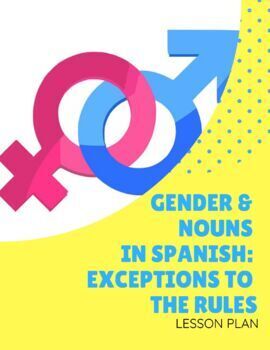 Gender and Nouns in Spanish – Exceptions to the Rules Lesson Plan
Gender and Nouns in Spanish – Exceptions to the Rules Lesson Plan
By the end of this activity, students will have learned that exceptions exist for the rules that guide gender and nouns in Spanish. A memory activity will help them remember a group of nouns that adhere to the exceptions.
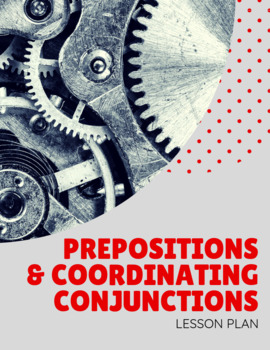 Prepositions and Coordinating Conjunctions Lesson Plan
Prepositions and Coordinating Conjunctions Lesson Plan
By the end of this activity, students will have reinforced their prior knowledge of prepositions and coordinating conjunctions as connecting words. Also, students will have to remember which part of speech belongs in different kinds of sentences.
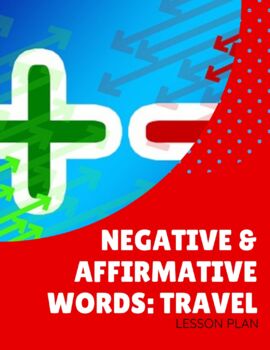 Negative and Affirmative Words – Travel Lesson Plan
Negative and Affirmative Words – Travel Lesson Plan
Students are introduced to affirmative and negative words and learn travel destinations vocabulary and various places around the world by reading an authentic article in Spanish from a travel website and use information from the text to practice what they have learned in a series of activities.
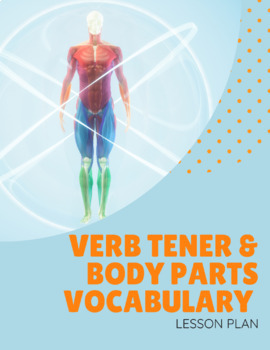 Verb TENER and Body Parts Vocabulary Lesson Plan
Verb TENER and Body Parts Vocabulary Lesson Plan
Learn body parts and express symptoms with the verb TENER in the present. By the end of this lesson, students will be able to identify and verbalize basic body parts and describe different disabilities with simple sentences.
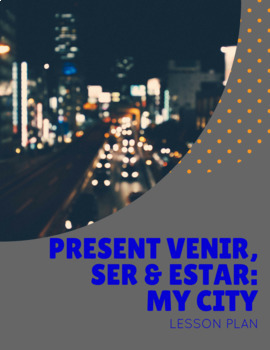 Present VENIR SER ESTAR – My City Lesson Plan
Present VENIR SER ESTAR – My City Lesson Plan
Students learn about the present tense conjugation of these verbs. They will be able to use them to talk about themselves and others to tell where they are coming from (venir), who they are (ser) and where they are (estar).
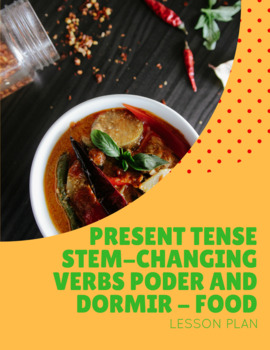 Present Tense Stem-Changing Verbs PODER and DORMIR – Food Lesson Plan
Present Tense Stem-Changing Verbs PODER and DORMIR – Food Lesson Plan
Students learn about these stem-changing verbs with a presentation and/or handout. They will use two authentic texts to practice these verbs and food vocabulary. In the final oral activity, they will work in pairs to create a skit based on the situations provided.
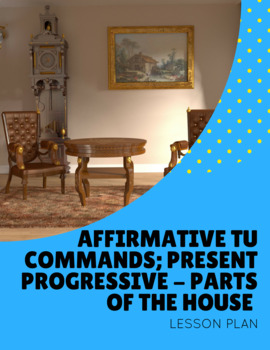 Affirmative TU Commands; Present Progressive – Parts of the House and Household Chores Lesson Plan
Affirmative TU Commands; Present Progressive – Parts of the House and Household Chores Lesson Plan
Students learn about affirmative TU commands after a class discussion guided by a presentation and a rap song. They will also review the parts of the house vocabulary with an authentic real estate video in Spanish and learn the gerund to form the present progressive.
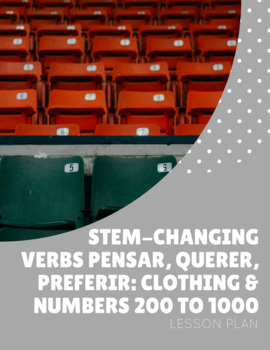 Stem-Changing Verbs PENSAR, QUERER, PREFERIR – Clothing and Numbers 200 to 1000 Lesson Plan
Stem-Changing Verbs PENSAR, QUERER, PREFERIR – Clothing and Numbers 200 to 1000 Lesson Plan
Students review the stem-changing verbs and review the clothing vocabulary with an educational video. They also learn about the numbers using authentic infographics and do oral practice using real online information from a retail store.
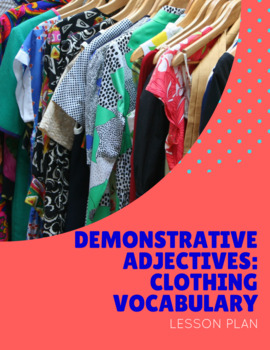 Demonstrative Adjectives – Clothing Vocabulary Lesson Plan
Demonstrative Adjectives – Clothing Vocabulary Lesson Plan
Students learn the clothing vocabulary using authentic clothing catalogs in Spanish. Includes a presentation to explain the demonstrative adjectives and role-play activity to practice the lesson.
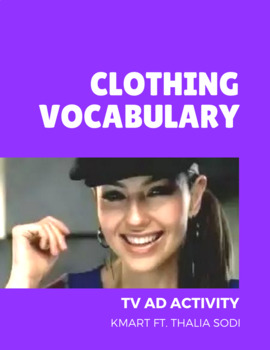 TV Ad Kmart – Thalia Sodi – Clothing Vocabulary
TV Ad Kmart – Thalia Sodi – Clothing Vocabulary
Students will be able to: (1) Learn vocabulary related to clothing and other words to describe it in Spanish. (2) Learn or review vocabulary related to places in the city and appropriate attire for each situation. (3) Practice how to make suggestions on clothing in Spanish.
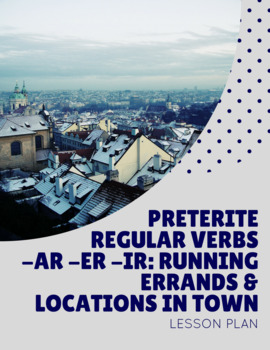 Preterite Regular Verbs AR ER IR – Running Errands and Locations in Town Lesson Plan
Preterite Regular Verbs AR ER IR – Running Errands and Locations in Town Lesson Plan
The vocabulary is presented using an authentic video in Spanish. They will learn about the preterite of the regular verbs with a guided presentation and practice using a real errand service price guide from Spain.
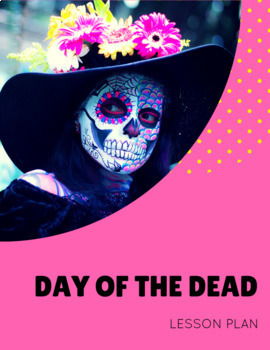 Day of the Dead – El Día de los Muertos
Day of the Dead – El Día de los Muertos
Students learn about the origin of the Day of the Dead and discuss the concept of ‘cultural syncretism’. They will discover the deeper meaning of the festival through a video and learn some of the elements that are part of the festival. Finally, they watch a video about the influence of Halloween on the traditional Day of the Dead in Cancun.
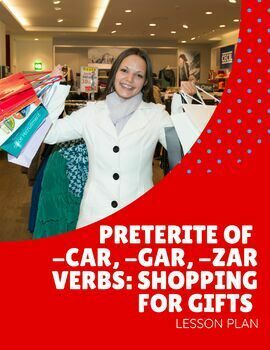 Preterite of -CAR, -GAR, -ZAR Verbs – Shopping for Gifts
Preterite of -CAR, -GAR, -ZAR Verbs – Shopping for Gifts
Students review the vocabulary with an infographic and a series of images. Then, the preterite of -AR, -CAR, -GAR verbs are discussed in class. Finally, students use situation cards to combine vocabulary and verb tenses.
 Direct Object Pronouns – Buying and Selling
Direct Object Pronouns – Buying and Selling
Students will be able to communicate in a store to buy or sell. They will learn clothing vocabulary and how to ask questions about the pricing, size, and features of the objects. They will also be able to answer questions using direct object pronouns.
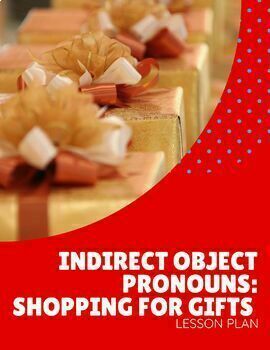 Indirect Object Pronouns – Shopping for Gifts
Indirect Object Pronouns – Shopping for Gifts
Students will learn vocabulary related to shopping gifts for someone in particular. They will find out how to speak with sellers and express likes and dislikes about gifts. They will also learn indirect object pronouns
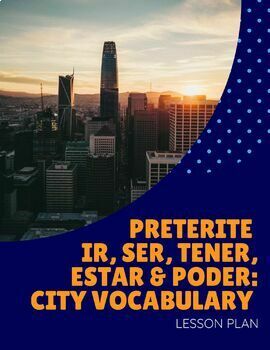 Preterite IR SER TENER ESTAR PODER – City Vocabulary
Preterite IR SER TENER ESTAR PODER – City Vocabulary
Students are exposed to the city vocabulary with an authentic travel video from Mexico City. They will be able to give directions to get to different places. They will also use these verbs in context.
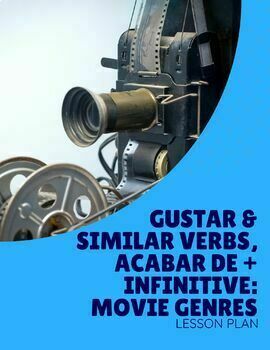 GUSTAR and Similar Verbs, Acabar de + Infinitive – Movie Genres
GUSTAR and Similar Verbs, Acabar de + Infinitive – Movie Genres
Students learn about movie genres, their characteristics, and how to identify them. They learn to use the verb gustar and similar verbs to express their opinion about movies. They also learn to use acabo de + infinitive to talk about something that they have done recently
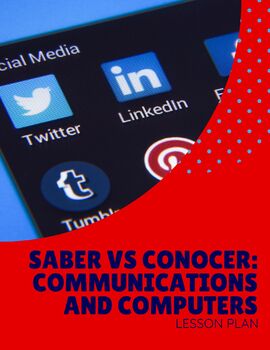 SABER vs CONOCER – Communications and Computers (Social Media)
SABER vs CONOCER – Communications and Computers (Social Media)
Students learn the differences and the similarities between saber and conocer, their common uses, and the conjugations. Beginning with technology and computing vocabulary, they learn how to use the verbs saber and conocer in context.
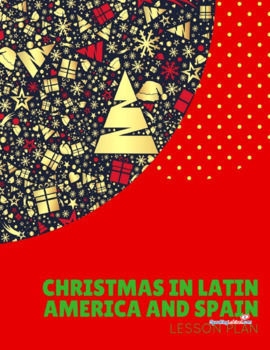 Christmas in Latin America and Spain – Navidad
Christmas in Latin America and Spain – Navidad
Students learn Christmas vocabulary as well as some Christmas traditions from Spain and Latin America. It begins with an image-text inference activity to learn Christmas vocabulary. Then students learn Christmas traditions from Spain with a presentation and authentic videos.
Students will learn vocabulary related to friendship and personal relationships as well as the similarities and differences between the prepositions POR y PARA. They will put into practice the new vocabulary, exchanging information, and checking their pronunciation through spoken and written activities.
 Affirmative TU Commands – Classroom Items and School Activities
Affirmative TU Commands – Classroom Items and School Activities
Students review the vocabulary with a game and video. Then, the imperative is introduced with a comic strip, followed by an explanation that includes the irregular verbs. Finally, they create and present an ad that promotes a fictional robot that follows commands.
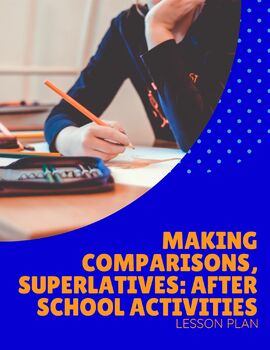 Making Comparisons, Superlatives – After School Activities
Making Comparisons, Superlatives – After School Activities
Students learn vocabulary related to after-school activities through real documents (after school activities handout from several schools) and videos. They will learn about adjectives too. Later, they learn the rules to form a comparative and the ones with an irregular comparative grade.
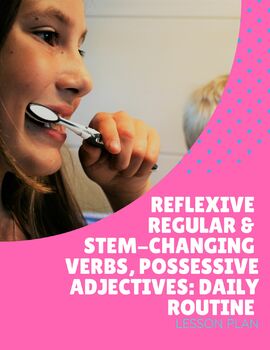 Reflexive Regular and Stem-Changing verbs, Possessive Adjectives – Daily Routine
Reflexive Regular and Stem-Changing verbs, Possessive Adjectives – Daily Routine
Students review the reflexive verbs and classify verbs in regular and irregular. Then, they review the possessive adjectives and practice with an oral activity where they label a series of “objects” with their classmates’ names and answer random questions that identify the owner of each one.
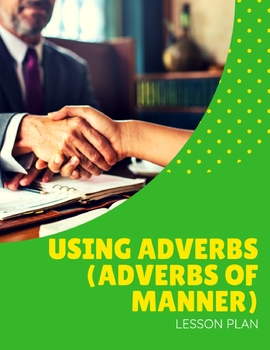 Using Adverbs – Adverbs of Manner
Using Adverbs – Adverbs of Manner
Students will have learned how to use introductory adverbs in Spanish as well as how to place them correctly within sentences in the context of a job interview.
 Affirmative Irregular TU Commands – Modes of Transportation, the city, getting around town
Affirmative Irregular TU Commands – Modes of Transportation, the city, getting around town
Students will be able to identify and describe basic modes of transportation as well as their city/town. They will also give and respond to basic commands that are represented by irregular verbs.
 Imperfect AR ER IR Verbs – Toys and Playing Around
Imperfect AR ER IR Verbs – Toys and Playing Around
Students learn toys and childhood games vocabulary from text and matching images. They discover the imperfect tense identifying the verbs from the original text. They also create a cheat sheet to understand the imperfect tense. Finally, they do an oral practice using the imperfect to describe their childhood.
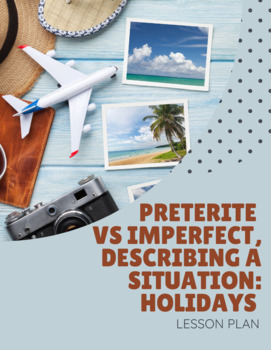 Preterite vs Imperfect, Describing a Situation – Holidays (Vacation) and Family Celebrations
Preterite vs Imperfect, Describing a Situation – Holidays (Vacation) and Family Celebrations
Students identify and understand the difference between the imperfect to describe circumstances and other characteristics of the past as compared to the use of the preterite to narrate the facts of what happened in the past.
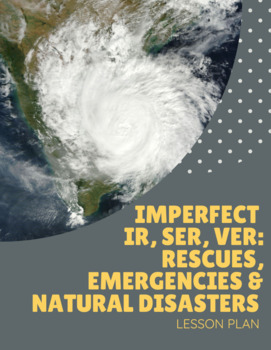 Imperfect IR SER VER – Rescues, Emergencies, and Natural Disasters
Imperfect IR SER VER – Rescues, Emergencies, and Natural Disasters
Students review the vocabulary with a listening comprehension activity. Next, they use the same text to identify the verbs. Finally, they work in groups to describe natural disasters from the past using vocabulary and verbs in the imperfect tense.
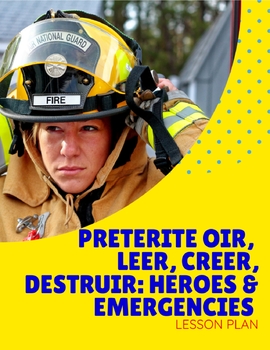 Preterite OIR LEER CREER – Heroes and Emergencies Lesson Plan
Preterite OIR LEER CREER – Heroes and Emergencies Lesson Plan
Students will be able to use the preterit of oir, leer, and creer to express ideas in the past and describe heroic acts and the situations surrounding them, especially related to humanitarian acts.
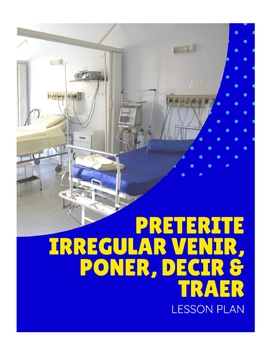 Preterite Irregular VENIR PONER DECIR TRAER – Accidents, Body Parts, and Emergency Room
Preterite Irregular VENIR PONER DECIR TRAER – Accidents, Body Parts, and Emergency Room
Students will be able to name basic body parts and name different symptoms of illnesses. They will also use the preterit to express events in the past, especially of irregular verbs.
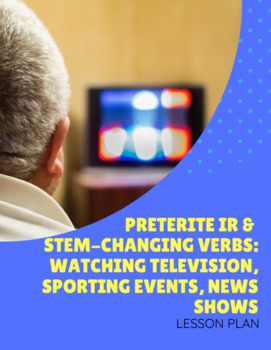 Preterite IR Stem-changing Verbs – Watching television, Sporting Events and News Shows
Preterite IR Stem-changing Verbs – Watching television, Sporting Events and News Shows
Students will be able to use IR stem-changing verbs in the preterite to describe their TV watching habits and preferences, sporting events, and different types of media and their characteristics in Spanish.
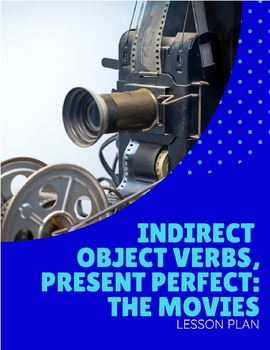 Indirect Object Verbs Present Perfect – The Movies
Indirect Object Verbs Present Perfect – The Movies
Students will be able to describe their preferences relating to movies and their recent experiences, especially ones that represent a degree of importance to the present situation (i.e., using present perfect).
 Negative TU Commands – Cooking Expressions, Food, Appliances, Following a Recipe Lesson Plan
Negative TU Commands – Cooking Expressions, Food, Appliances, Following a Recipe Lesson Plan
By the end of this lesson, students will be able to use negative commands to express orders to the people and ask questions to confirm whether something should be done or not and understand the answers if negative commands are used.
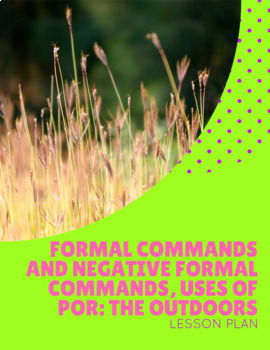 Formal Commands and Negative Formal Commands, Uses of POR – The Outdoors
Formal Commands and Negative Formal Commands, Uses of POR – The Outdoors
By the end of this lesson, students are able to give and react to affirmative and negative commands expressing nuances of formality with verbs that they are familiar with. They will also be able to ask and answer questions relating to outdoor activities using common expressions.
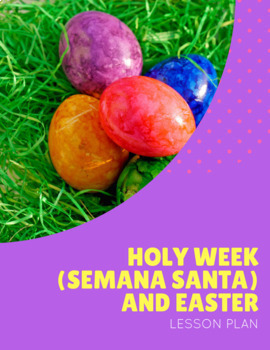 Easter and Holy Week (Semana Santa)
Easter and Holy Week (Semana Santa)
Students read a text in Spanish about Holy Week traditions. They identify cognates, answer reading comprehension questions, and prepare a presentation about specific traditions mentioned in the reading. Includes the audio file for the reading.
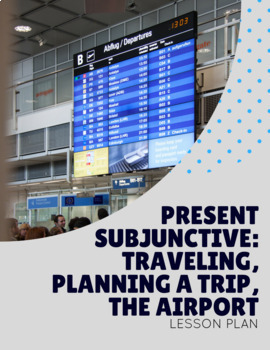 Present Subjunctive – Traveling, Planning a Trip, the Airport
Present Subjunctive – Traveling, Planning a Trip, the Airport
Students use the reading ¿Qué tipo de viajero eres? to learn about the present subjunctive of regular and irregular verbs.
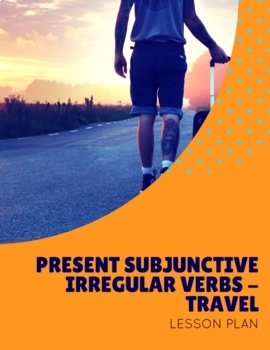 Present Subjunctive Irregular Verbs – Travel
Present Subjunctive Irregular Verbs – Travel
To introduce the vocabulary, students use authentic materials such as an infographic and a video in Spanish. With the same video, the present subjunctive with irregular verbs is presented. Students make an oral practice using the vocabulary and the subjunctive in recreating a tourist information office.
 Present Subjunctive Stem-changing Verbs – Staying in a Hotel and Tourists
Present Subjunctive Stem-changing Verbs – Staying in a Hotel and Tourists
This lesson starts by presenting the hotel and tourism vocabulary. Then it uses a text from a postcard to learn about the Present Subjunctive in stem-changing verbs.
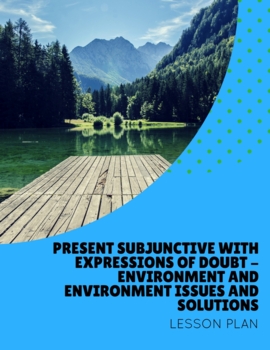 Present Subjunctive with Expressions of Doubt – Environment and Environment Issues and Solutions
Present Subjunctive with Expressions of Doubt – Environment and Environment Issues and Solutions
Students describe common environmental issues and the challenges that we face and use common expressions of doubt and possibility to describe current circumstances, especially with the present subjunctive.
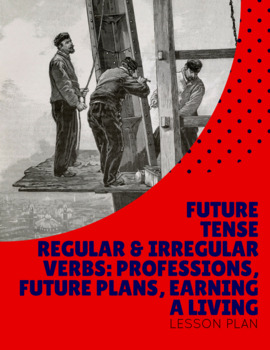 Future Tense Regular and Irregular Verbs – Professions, Future Plans, Earning a Living
Future Tense Regular and Irregular Verbs – Professions, Future Plans, Earning a Living
Students learn about the future tense with a text about possible future jobs. They will create fortune cookie statements in the future tense.
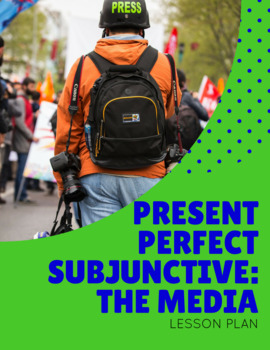 Present Perfect Subjunctive – The Media
Present Perfect Subjunctive – The Media
Students learn about the media and the sections of a newspaper. They will be able to express their opinion about the partiality of the media, giving reasons using appropriate phrases. They use common expressions to express their opinion about events that have finished in the past, especially expressions that contain the present perfect subjunctive
This commercial is about prejudices and how to fight them. Students will complete activities to analyze the vocabulary and use the present subjunctive to express doubt or uncertainty to describe people, situations, or objects.
By the end of this activity, students will have learned three different ways to express intention in Spanish. At the same time, students will review grammar rules around the use of the future tense, the use of para, and the use of the subjunctive mood.
Students learn about the Carnivals in Spanish speaking countries with text and two videos of the carnivals from Bolivia and Spain. They also learn about the Impersonal SE by completing a grammar chart and a written practice. Finally, students do an oral presentation using the Impersonal SE of the two carnivals based on information and images provided in the lesson plan.
Click here for more Spanish Lesson Plans.
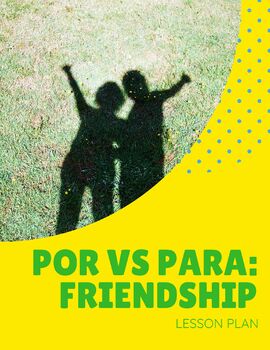 POR vs PARA – Friendship
POR vs PARA – Friendship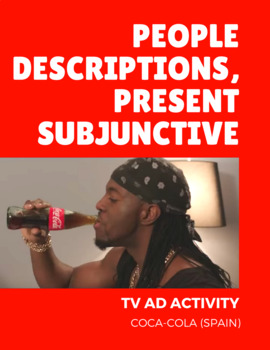 TV Ad Coca Cola – Coca Cola Commercial – Prejudice, Generalizations, People Descriptions, Present Subjunctive
TV Ad Coca Cola – Coca Cola Commercial – Prejudice, Generalizations, People Descriptions, Present Subjunctive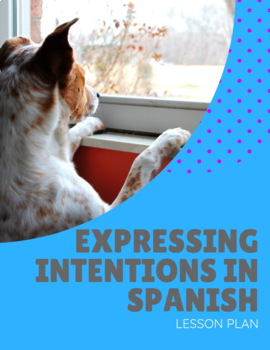 Expressing Intention
Expressing Intention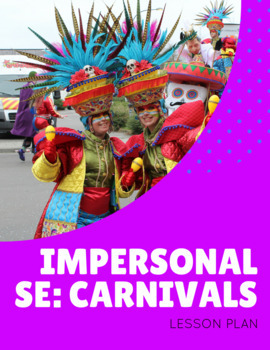 Impersonal SE – Carnivals
Impersonal SE – Carnivals